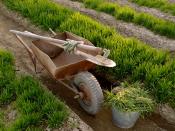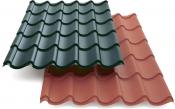Search
Login
Cucumbers, their varieties, planting methods, plant care and harvest
Cucumber is a popular dietary vegetable, although its homeland is India, which has a warm and humid climate, it is quite possible to grow a plant in more severe conditions, for example, in the midland of European countries.
Content
- Choose the seeds of cucumbers
- The best cucumbers for greenhouses
- Outdoor cultivation of cucumbers
- Duration of fruiting of cucumbers and early ripening varieties
- Cucumber yield
- Salting and salad varieties
- We prepare soil for cucumbers and plant seeds or seedlings
- Care Features video
- Problems that arise when growing cucumbers
- Cucumbers on the windowsill video
Choose the seeds of cucumbers

In order to choose the right seeds of cucumbers, you should decide on the place of their cultivation - in the greenhouse, on the windowsill or on the loggia, on the countryside in the open ground. For the latter option, you can use bee pollinated varieties and parthenocarpic, which form an ovary without pollination.
Since all plants are at risk of disease, you should opt for varieties that are resistant to at least the most common ones: cladosporiosis, downy and powdery mildew, sclerotinia and gray rot.

To grow high-quality cucumbers in the open ground, you will need to purchase seeds of zoned varieties, i.e. taking into account the area where they will land. Properly selected varieties are the guarantee that plants will yield a rich harvest. Very few varieties grow equally well in the southern and northern regions.
You need to purchase high-quality seeds in specialized stores or in online stores that sell seeds of elite plants.
The best cucumbers for greenhouses

For growing cucumbers in greenhouses, agronomists recommend the use of partenocarpic varieties, their productivity does not depend on pollination by insects, but it should be remembered that the manifestation of a parthenocarpy of a plant can be significantly reduced due to poor-quality conditions of its maintenance - excessive humidity, temperature changes, and other stressful situations. The best cucumbers for the greenhouse are hybrids, their name must necessarily contain the inscription F1: Farmer, Faithful friends, Captain, Compass, Lord, Alphabet, Teremok, TSHA-1, Zozulya - all of them are self-pollinated, with a female type of flowering.
Outdoor cultivation of cucumbers

For open ground, we get zoned seeds, best of all the so-called varieties. cold-resistant, which in addition to this quality are resistant to excessively dry air, winds, and temperature changes. It is not bad if such varieties differ in shade tolerance. But you should not plant winter shade-tolerant varieties in the summer. Among the best varieties that meet the above requirements can be called F1 hybrids: Be healthy, Burevestnik, Buyan, Karapuz, Green Wave, Trump card, Saltan, marina grove, Okhotny Ryad, Boy with a finger, Ant, etc. For shaded areas, the best option would be F1 grades: Moscow evenings, Mastak, Danila, Company secret.
Duration of fruiting of cucumbers and early ripening varieties
Different varieties of plants differ in the duration of fruiting: for early ripening hybrids, its beginning and active fruit formation during the first month of fruiting are characteristic earlier (varieties F1: Alphabet, Regina-Plus, Bouquet, Cupid). Beginning of fruiting in such varieties occurs approximately 45 days after seed emergence, in late-ripening - after 50 days.

But these indicators will correspond to real ones only on condition of sowing and growing cucumbers at acceptable temperatures of air and soil. Recommended planting dates for the middle lane in unheated greenhouses - after May 15, in the ground - after June 5.
Cucumber yield

An important issue is also the yield of varieties. In order to have throughout the summer harvest, you should pay attention to the bunch varieties that have become very popular, which are characterized by the formation of a large number of ovaries in the nodes. Their advantages: small fruits such as gherkins, a large number of greens, excellent taste, suitability for pickling.

Experienced gardeners claim that up to 500 cucumbers can be planted on one bush of such varieties per season. Recommended varieties of bunch cucumbers: Alphabet, Dragonfly, Teremok, Hit of the Season, Grasshopper, Green Wave, Buyan, Compass and others, among them there are bee pollinating and parthenocarpic varieties.
Salting and salad varieties
Before buying seeds, we also determine how many cucumbers will be needed for fresh consumption and how much - for harvesting for the winter. Varieties of different purposes are distinguished by the stiffness of the skin and the presence of sugars and pectins in the fruit. You can distinguish varieties suitable for salting by the presence of a pronounced tuberosity of the surface and black spines.

The best pickling varieties are: Matryoshka, Ant, Trump card, Grasshopper, Farmer, Anyuta, Faithful friends, naturally marked F1, and others. Harvesting cucumbers for pickling and pickling is done when the fruits reach a size of 5-7 cm. Ideal for pickling varieties are: Delicacy, Regia F1, Leandro F1. For the preparation of salads, one should choose cucumbers whose varieties genetically cannot produce bitterness and are distinguished by a juicy, crisp, sweet taste with flesh. Among them, we note hybrids: Tamerlan, Kochubey, Marta, Makar, Zozulya, Bazaar.
We prepare soil for cucumbers and plant seeds or seedlings

Cucumbers can be grown by seedlings and by sowing seeds directly into the soil. For seedlings, seeds are planted in cups filled with soil about a month before they are planted on the site (late May - early June). Untreated seeds can be pre-soaked in water before germination; treated seeds should not be soaked. It is possible to plant seeds in open ground at a temperature of at least +15 degrees. Seeds are buried in the earth to a depth of 3 cm.
Up to 5 plants can grow on one square meter. It is possible to plant cucumber seedlings on beds, provided there is no significant decrease in temperature and frost in the forecast. It should be noted that the land that is prepared for planting seedlings from pots should be richer in nutrients than the one in which the seedlings were grown - otherwise the root system of the plant will not strive for proliferation.

Proper soil preparation is important: its careful digging and enrichment with nutrients. It can be fertilized locally - directly in the hole or in the trench: a layer of organic fertilizers is laid at a depth of about 40 cm, mixed with soil, and covered with ordinary soil. The resulting warm pillow will contribute to the active growth of the root system, the development of the plant and provide it with nutrients for the growth period.
The territory for the cucumber beds should be well lit by the sun or be in partial shade.

For normal development, an air temperature of at least +23 degrees is required; when it is lowered to +15, the plant suffers and stops growing, frosts on the ground usually lead to its death. In problem regions, it is proposed to grow cucumbers in early summer under a film.
Care Features

Caring for plants involves several stages.
- Irrigation - they are produced with warm water with a frequency that prevents even short-term drying of the soil, proper watering during plant formation is especially important.
- Mulching the soil soil with dry grass or straw - the presence of a protective layer on the soil allows you to slow down the process of moisture evaporation, prevent the rapid growth of weeds, therefore it will be possible to water the beds less often, and they will not have to be weeded. When refusing mulching, excessive soil compaction is also observed - to restore air access to the roots of the plant, it will be necessary to puncture the soil with a pitchfork to a depth of 15 cm.
- Pinching the shoots, it is made after the appearance on the central stem of 5 or 6 leaves and allows the plant to throw additional shoots with a predominantly female flowering type.
- Top dressing, which is made about once every two weeks. They are carried out with a solution of fertilizers, while avoiding the ingress of the solution onto the stem and leaves, otherwise burnt areas may appear on them. On cool days, feeding is not recommended - nutrients will not be absorbed quite effectively.
- Regular harvesting - it will help prolong the period of active fruiting and will stimulate fruit formation, it is best to pick cucumbers if not daily, then once every two days.
Problems that arise when growing cucumbers

Growing cucumbers often leads to certain problems.
- Often they are associated with the spread of gray rot in the beds excessively moistened with rain. An excellent solution would be to garter plants on trellises.
- With the appearance of predominantly male flowers that do not give an ovary, watering the plants should be temporarily stopped, at least for 3-4 days, until the soil dries.
- Falling of the ovary is a consequence of a lack of nutrients in the soil or a consequence of its overmoistening. The soil is dried, then the plants are fed with a solution of ash or mineral fertilizers.
- When using organic dressings, it should be borne in mind that they can cause diseases, such as fusarium or tobacco mosaic.
Cucumbers on the windowsill

In the absence of their own land, you can grow cucumbers on the windowsill or on the loggia. For this, shade-resistant, self-pollinating hybrids should be chosen. On the packaging of such plants it is usually indicated that they are suitable for cultivation in an apartment.
When choosing a capacity for a plant, remember that for the normal development of its root system, at least 5 liters of soil will be needed. In low light conditions, plants may need backlighting.





